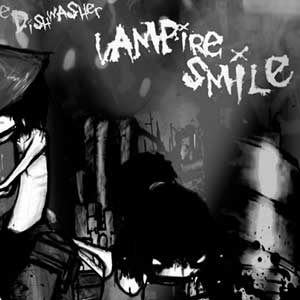
Silva's story is well known among the independent development community: In 2007, the then-unknown developer (and former dishwasher) won Microsoft's Dream-Build-Play XNA competition and used the $10,000 in prize money to single-handedly release Dead Samurai, which went on to gain a cult following and critical acclaim. %Gallery-117545% The Dishwasher: Vampire Smile is the sequel to James Silva's 2008 indie XBLA hit The Dishwasher: Dead Samurai. She collapses, bathed in their blood, and the nightmares wash over her again. She lets out a roar and leaps on him, rending his flesh with her bare hands. A last, lonely ninja hobbles towards her, his katana waving impotently. Soldiers, cyborgs, nefarious government agents, zombie marines she liquifies them all. Her enemies give fruitless pursuit, haplessly swinging and shooting, their blades and bullets finding only air. Your eye can barely track her movements as she flits from corner to corner, vanishing in a puff of crimson smoke only to reappear, strike, and then vanish again.

The young girl swings and stabs, ripping her blade through flesh, metal and bone, eviscerating foe after foe until the room is covered in a thick, rich coat of red. Advances techniques come later in the game, though I'd rather not spoil them, since they add another nice layer to your repertoire.It's a bloodbath, all right. Regardless, the controls make the game a total joy to play when you are racking up combos across dozens of on-screen enemies. There are five difficulty levels, some of which you have to unlock through play. At no point in the game did I feel like I was cheated into death, although granted I only played on normal difficulty. Quick time button-press executions round out the normal fighting, which is already incredibly diverse and complex.Īll of this would be for naught without responsive controls, and D:VP delivers on that in spades. Grabs can also be done in the air, another critical technique to learn. This becomes a crucial skill to learn during hectic fights. The ghost step allows you to quickly dash in any direction (even vertically), mist through gates and enemies, including enemy attacks. You can also double jump, but mostly you will use the right thumbstick to "ghost step", which is easily the most useful and awesome move of the game, and it makes me wonder why more games haven't copied it. This makes for some interesting mid-fight swap approaches for each room battle.Įach weapon has a hard and light attack to go along with a grab and your regular jump. Weapons are swapped between your selected loadout with left bumper or L1 (and yes please use a controller for this game) while loadouts are swapped with right bumper or R1. Their weapons are mostly derivative of each other's, and each character receives multiple weapons throughout the game, which you can slot into two slots of two loadouts. The combat arrangement and execution is similar for Dishwasher and Yuki.

I've been through the game with both characters and can attest that it's worth the second playthrough.

While the levels remain largely the same for the two, there are times where they branch off from one another as well. Both characters have widely deviating story arcs, including having separate boss fights in some cases. This isn't just a cosmetic or playstyle difference either. For single player enthusiasts, you get a choice of characters, between either the titular Dishwasher, or his stepsister Yuki. Right from the get-go, there's a lot to love about this game.


 0 kommentar(er)
0 kommentar(er)
